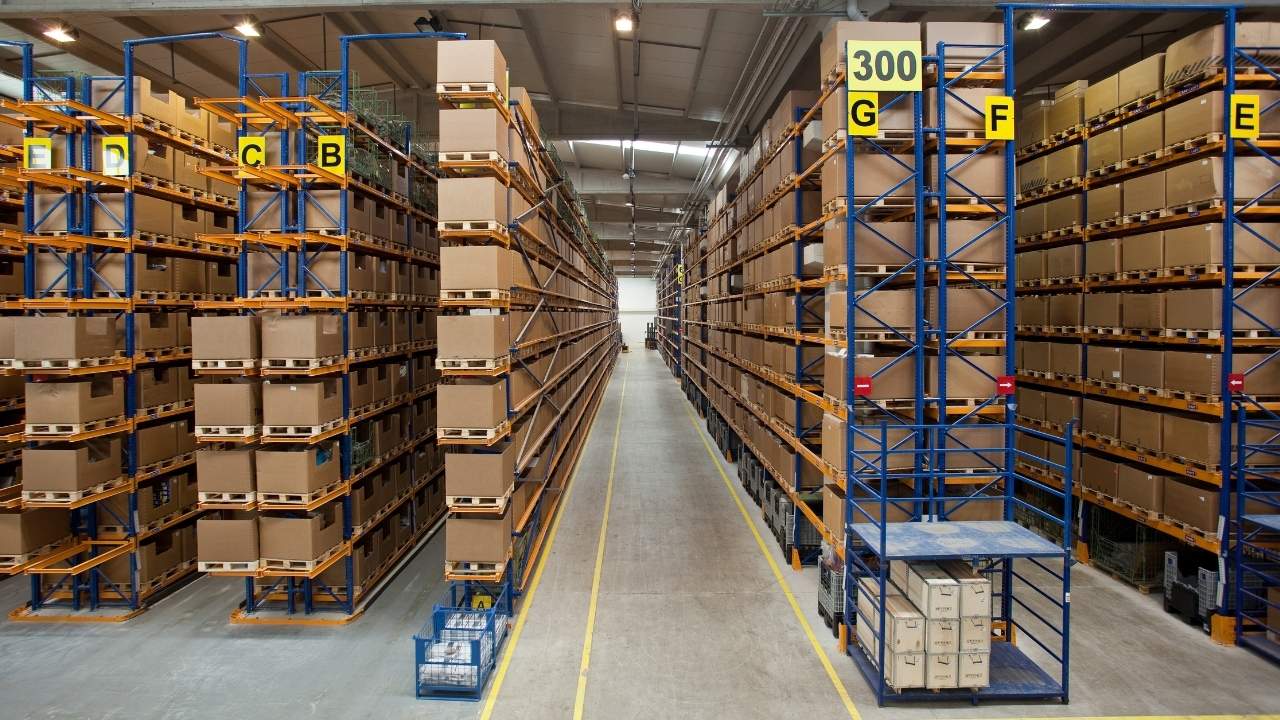Impact of Logistics Costs on Business Success
Logistics is the backbone of any organization, yet its costs are often overlooked. As globalization increases competition and customer expectations continue to rise, proper logistics cost management has become mission-critical for business success.
This article provides an in-depth exploration of logistics costs and strategies to optimize them. We’ll define the various cost categories, analyze their influence across business functions, and examine how emerging technologies are revolutionizing cost control. By gaining a holistic understanding of their far-reaching impact, businesses of any scale can streamline operations and boost profitability.
Defining the Scope of Logistics Costs
Logistics refers to the planning, implementation, and control of the flow and storage of goods, information, and other resources like energy and people between the point of origin and the point of consumption. This includes material handling, inventory control, order fulfillment, transportation, warehousing, and packaging.
Logistics costs encompass all expenses associated with these activities. The seven main categories and their components include:
- Acquisition Costs: Expenses related to procuring raw materials and components from suppliers. This includes vendor selection, price negotiation, purchase order management, receiving, and quality inspection. Additional acquisition costs come from sourcing secondary and tertiary packaging materials.
- 2. Inventory Costs: All costs associated with receiving, storing, insuring, monitoring, and reporting inventory levels of raw materials, work-in-progress items, and finished goods. Key cost drivers are warehouse and storage facility expenses, equipment like racks and bins, utilities, insurance, inventory adjustments, and obsolescence charges. Labor, software, and systems for inventory management also factor in.
- Packaging Costs: Expenditures for primary, secondary, and tertiary packaging. This considers the cost of packaging materials and supplies, printing/labeling, and disposal/recycling costs. Packaging plays a pivotal role in protecting products, identifying brands, and meeting regulatory requirements.
- Transportation Costs: Freight charges for moving goods between supplier sites and manufacturing plants, plants and distribution centers, and distribution centers to customers or retailers. Modes include truck, rail, air, and ship. Fuel, carrier rates, fleet ownership/leasing, and tolls are major transportation expenses.
- Taxation: Fees and duties imposed by governments at various stages of production and distribution including import/export duties, sales tax, property tax, fuel taxes, and more. Tax rates and exemptions vary greatly between countries, states, and regions.
- Technology: Software, hardware, systems, and infrastructure that support logistics planning and execution. This includes warehouse management systems, transportation management systems, ERP systems, IoT devices, telematics, cloud computing services, and more.
- Human Resources: Labor costs including wages, benefits, training, safety equipment, and retention activities for logistics employees. Positions range from warehouse workers and drivers to supply chain analysts, managers, and executives.
The Ripple Effect of Logistics Costs
Logistics costs profoundly impact all facets of business operations and performance. On average, these expenses represent 5-15% of revenue for many companies. However, their influence extends far beyond this direct spending.
In procurement, high acquisition costs reduce profit margins and hinder competitiveness. In manufacturing, excess inventory ties up working capital and increases risks of obsolescence or damage. Ineffective packaging drives up damage claims and return rates.
Inefficient transportation planning leads to higher freight bills, stockouts, and late deliveries that damage customer satisfaction. Non-compliance with tax regulations results in penalties and audits. Outdated technologies limit visibility, analytics capabilities, and process optimization potential.
Suboptimal human resource strategies like high turnover drive unnecessary training and recruitment costs. Without a strategic approach, these avoidable logistics expenses compound over time to significantly erode a company’s financial health and market position.
Why Logistics Costs Matter More than Ever
-
Market Disruption
Industry boundaries are blurring rapidly. Startups are harnessing technology to offer innovative solutions while incumbents face the heat to adapt or risk extinction. This disruption amplifies the need for agile, efficient, and cost-optimized supply chain capabilities.
-
Evolving Customer Preferences
With proliferating choices, customers demonstrate limited brand loyalty and high expectations of personalization, quality, and convenience. Fulfilling these demands profitably warrants streamlined, digitized, and inexpensive logistics operations.
-
Profitability Pressures
With investors focused on tangible financial outcomes, organizations must continually rein in overheads and unlock savings. Logistics constitutes a ripe target domain given its multifaceted cost structure and optimization potential.
-
Strategic Pathways to Lower Logistics Costs
In response to the above challenges, executives must pursue systematic approaches to minimizing logistics outlays. Broad contours include-
-
Comprehensive Spending Analysis
This entails deep-diving into all constituents such as fixed vs variable components, departmental allocation, and comparison with benchmarks to identify savings headroom.
-
Tax Regime Optimization
Proactively seeking out applicable incentives, subsidies, and exemptions within compliance bounds can lead to considerable tax savings.
-
Supply Chain Process Standardization
Identifying inefficiencies via process mapping followed by streamlined workflows, higher automation, and regular reviews to incorporate best practices.
Comprehensive Logistics Cost Management
To gain control over their rippling impact, businesses must develop a comprehensive logistics cost management strategy. This process starts with accurately classifying all costs as either fixed or variable to understand optimization opportunities.
Costs are then analyzed across the different functions of procurement, operations, transportation, and customer service to pinpoint inefficiencies. Process mapping identifies bottlenecks and non-value-added activities for elimination. Standardization establishes best practices for efficiency and compliance.
Strategic tax planning helps leverage credits, exemptions, and free trade agreements to reduce tax obligations. Embracing automation through technologies like warehouse automation equipment and transportation management systems boosts productivity while reducing errors.
Integrated systems provide end-to-end visibility for real-time decision-making. Predictive analytics uncover cost-saving opportunities through scenario modeling and spend analysis. With the right strategy, even marginal reductions across many categories deliver substantial cumulative savings.
Developing a Holistic Logistics Cost Management Plan
To establish a robust logistics cost management program, businesses must create a comprehensive plan addressing each category. Here are some key elements such a plan should include:
Acquisition Cost Management
- Vendor selection criteria focused on quality, service levels, and pricing
- Negotiation strategies leveraging purchase volumes
- Inventory optimization to reduce safety stock requirements
- Evaluation of alternate sourcing options
Inventory Cost Management
- Forecasting techniques like exponential smoothing, regression analysis
- Min-max and reorder point models for optimal stock levels
- Kanban or other JIT pull systems where applicable
- Cycle counting and physical inventory programs
- First expired, first out usage of perishable goods
Packaging Cost Management
- Standardization of packaging specifications
- Evaluation of material substitution options
- Optimization of pallet patterns for space utilization
- Analysis of reusable vs. disposable packaging business cases
- Monitoring of damage rates to refine packaging requirements
Transportation Cost Management
- Rate negotiation strategies with carriers
- Load optimization and backhaul opportunities
- Analysis of transportation modes (truck vs. rail vs. intermodal)
- Route planning software for efficient scheduling
- Telematics for real-time load tracking
Tax Cost Management
- Appointment of tax experts or advisors
- Research on available credits, exemptions, and free-trade agreements
- Compliance monitoring and process documentation
- Collaboration with ERP and finance teams for reporting accuracy
Technology Cost Management
- 5-year technology roadmap with a phased implementation plan
- ROI analysis of prospective systems or upgrades
- Integration with key business systems like ERP and TMS
- Training programs for change management and user adoption
Human Resource Cost Management
- Compensation benchmarking and incentive-based pay scales
- Skills gap analysis and targeted training programs
- Safety initiatives to reduce injury-related costs
- Succession planning and knowledge transfer procedures
Leveraging Technology for Superior Visibility and Control
Emerging technologies are revolutionizing logistics cost management capabilities. Cloud-based logistics management platforms integrate data from all functions and systems into a single unified dashboard. This provides unprecedented visibility into spending patterns and exceptions.
Features like automated workflow, exception-based alerts, and system-driven analytics deliver powerful cost-optimization insights. Integration with ERP/finance systems ensures data accuracy for reporting, compliance, and strategic decision-making.
Warehouse management systems optimize space utilization and labor productivity through voice-directed picking, put-away, and replenishment. Transportation management systems streamline load planning, tracking, and settlement processes. IoT sensors deliver real-time asset visibility to optimize fleet utilization and maintenance schedules.
When implemented strategically using a phased approach, these modern logistics technologies empower companies of any scale to gain granular, actionable intelligence over their logistics spending. Tight cost management supports business growth through competitive pricing, rapid fulfillment, and exceptional customer experiences.
With logistics responsible for up to 15% of revenue, even marginal cost reductions deliver substantial cumulative savings. A holistic strategy is key to leveraging these opportunities while supporting evolving business needs. Technology acts as the great enabler, providing the real-time data visibility required to maximize control over all elements of the logistics cost structure.
Way forward with Versa Cloud ERP
Versa Cloud ERP provides a powerful yet affordable solution purpose-built for logistics cost management. With Versa, companies receive a single connected platform that integrates inventory, warehouse, transportation, manufacturing, and financial data from all business systems. Its advanced analytics and reporting capabilities deliver unprecedented spending insights.
Key Versa features like robust inventory, warehouse management, transportation management, and 3PL collaboration tools help optimize processes from procurement to delivery. Versa’s flexible platform scales easily with business growth. Customizable workflows ensure compliance with complex tax regulations while automated invoicing streamlines settlement processes.
Overall, Versa Cloud ERP is a comprehensive yet easy-to-use solution that empowers organizations of all sizes to master their logistics costs. Its unified data model and user-friendly interface provide the control, visibility, and optimization tools required to gain an edge in today’s landscape.
If you would like to experience firsthand how Versa can revolutionize your entire operations & logistics cost management, please schedule a free personalized product demo. One of our logistics experts will be happy to walk through real-world customer success stories and tailor a demo to your specific needs and goals.
ERP systems are fundamental to efficiently managing a modern supply chain in the manufacturing sector. By integrating various business processes, ERP systems streamline operations, enhance visibility, and improve decision-making, making them indispensable tools for manufacturers aiming to stay competitive in today’s market.
Empower your business with the knowledge to navigate the realm of an Integrated ERP solution, specifically tailored to your business needs. Gain insights, streamline processes, and propel your financial management to new heights with this comprehensive guide
With Versa Cloud ERP’s Implementation guide learn how a business can ensure a successful ERP Solution Implementation. Navigate the complexities of implementation with confidence!
Effectively manage your financials, accounting, inventory, production, and warehouse management workflows with our award-winning ERP.
Let Versa Cloud Erp’s do the heavy lifting for you.
[widget id=”custom_html-40″]
[widget id=”custom_html-42″]
[widget id=”custom_html-30″]
Do Business on the Move!
Make your businesses hassle-free and cut the heavyweights sign up for the Versa Cloud ERP today!!
Join our Versa Community and be Future-ready with us.






